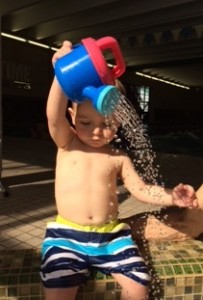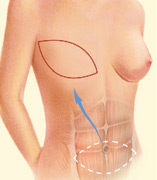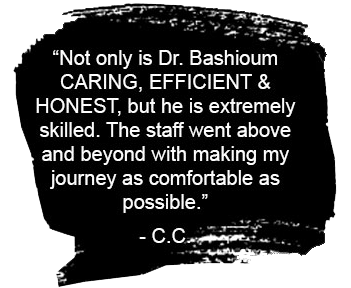Breast Cancer Part 3: Reconstruction Choices
October 28th, 2014
Take Time to Make the Right Decisions
If you are diagnosed with breast cancer, you have many choices to make. Take the time to make the right ones. Immediate reconstruction is safe, but you are not necessarily burning any bridges by delaying your reconstruction for personal reasons. No matter what your choice, breast reconstruction is inherently staged. This means it will involve multiple procedures, each being one of the stages, to achieve an optimal outcome. Breast reconstruction generally falls into two categories: implant reconstruction or reconstruction using a persons own tissue, also known as autologous reconstruction. Autologous reconstruction can be subdivided into either flap reconstruction, reconstruction with autologous fat transfer or even a combination of the two. All breast surgery will leave visible scars on the chest and although breast reconstruction will rebuild your breasts, the results are variable. Your reconstructed breast(s) will always feel different from your natural breast.
Last week we took closer look at breast reconstruction with autologous fat transfer. This week we will continue our educational series by discussing autologous reconstruction with flap techniques.
Flap Techniques
Flap techniques surgically reposition your own skin, fat and muscle to reconstruct your breast(s). Donor sites are areas of your body (abdomen, back, buttocks) where the surgeon harvests skin, fat and muscle for reconstruction. The hospital stay is usually two to five days with a recovery time of several weeks to months. These procedures offer a more natural appearance and feel than that of an implant. However, losing the muscle or part of the muscle from a donor site may leave a residual permanent weakness at that site (abdomen and/or back). You will be left with scars on your chest and another part of your body (abdomen, back or buttocks). Your reconstructed breasts will feel and look more natural but they will not be sensate.
Advances in microsurgical techniques have made free flap procedures available to patients desiring autologous reconstruction. The muscles are preserved during these procedures, therefore reducing the risks of donor site complications and permanent donor site weakness. However, these are lengthy surgeries, requiring specialized expertise in microsurgery and should only be carried out at facilities experienced with the postoperative care of free flaps. Otherwise the morbidity, complication and failure rates can be very high. Flap reconstruction procedures frequently require additional procedures to achieve the final breast contour and symmetry.
Each reconstructive technique has pros and cons. Join us for our next blog about breast reconstruction with implants. Please click here to read previous series Part 1, Part 2.
Diagram courtesy of American Society of Plastic Surgeons
Sun Safety Tips to Protect Your Kids
May 28th, 2014
 Summer is finally here! Here are some sun safety tips to protect your kids. Most of us love sunny days, no matter what time of the year, especially after such a long and snowy winter. The sun cheers us with its bright light and warmth. However, the sun also sends out harmful ultraviolet rays (UV-A and UV-B), which we cannot see. Long-term, risk from unprotected exposure to these UV rays causes up to 90% of all skin cancers. In fact, skin cancer is the most common form of cancer in the United States.
Summer is finally here! Here are some sun safety tips to protect your kids. Most of us love sunny days, no matter what time of the year, especially after such a long and snowy winter. The sun cheers us with its bright light and warmth. However, the sun also sends out harmful ultraviolet rays (UV-A and UV-B), which we cannot see. Long-term, risk from unprotected exposure to these UV rays causes up to 90% of all skin cancers. In fact, skin cancer is the most common form of cancer in the United States.
More than 1 MILLION new cases of skin cancer will be diagnosed in the US this year. Most of your lifetime skin damage, which increases the risk for developing skin cancer, occurs before the age of 18. Remember that sunburned or tanned skin is damaged skin. Even if a child’s sunburn or tan fades, the damage caused by that tan or burn does not. The damage keeps adding up with each sunburn or tan and may one day result in skin cancer. No matter how hard adults work at protecting their skin, the sun damage they received as children cannot be undone.
There is also good news though. Skin cancer is one of the most preventable forms of cancer. You can save the skin your child is in by protecting your children every time they go out into the sun all year round. Kids don not have to be at the pool, beach or on vacation to get too much sun. Their skin needs protection from the suns harmful ultraviolet (UV) rays whenever they are outdoors.
Turning pink? Unprotected skin can be damaged by the suns UV rays in as little as 15 minutes. Yet it can take up to 12 hours for skin to show the full effect of sun exposure. So, if your child’s skin looks a little pink today, it may be burned tomorrow morning. To prevent further burning, get your child out of the sun.
Tan? There is no other way to say it: tanned skin is damaged skin. Any change in the color of your child’s skin after time outside whether sunburn or suntan indicates damage from UV rays.
Cool and cloudy? Children still need protection. UV rays, not the temperature, do the damage. Clouds do not block UV rays, they filter them and sometimes only slightly.
Oops! Kids often get sunburned when they are outdoors unprotected for longer than expected. Remember to plan ahead, and keep sun protection handy in your car, bag or child’s backpack. Parents, help your children to play it safe, and protect your own skin as well. You are an important role model.
Sunscreen Tips: For the best protection, use sunscreen whenever your children are outdoors.
· Choose a sunscreen that offers both UVA and UVB protection
· Put sunscreen on 30 minutes before going outside
· Rub a generous amount of sunscreen on all uncovered skin (except the eyes) and even on areas that will be covered by light clothing, which does not filter out all UV rays
· Use a sunscreen stick or lip balm on sensitive areas like the lips, nose, ears, hands and feet
· Choose a water-resistant or waterproof sunscreen if your child is playing in the water
· Sunscreen should be re-applied every two hours, even if it is a waterproof type
· Towel-dry your child before re-applying sunscreen if your child is sweaty or has been swimming
· Schedule outside activities for early morning or late afternoon. Avoid the hours of 10 am to 4 pm when the sun’s UV rays are strongest and most harmful.
· Choose a wide-brimmed hat to shade your child’s face, scalp, neck, and ears (not a baseball cap!)
Now, get ready, set…GO! Enjoy Summer!

